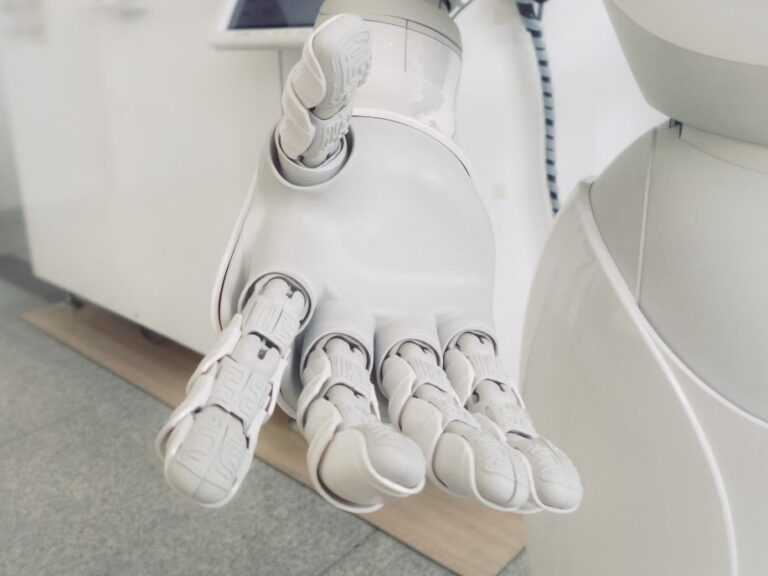Technology is becoming intelligent every day. Technology is becoming a solid part of its core, from cars to computers. Human needs and behavior change daily, but that doesn’t mean the products one buys or services one opts for will not be up to the standard.
On the contrary, technology is progressing faster and becoming more intelligent. Numerous sophisticated algorithms are being developed to cater to our ever-growing needs. One such brilliant piece of technology is Cobots, a.k.a. collaborative robots. Unlike robots, which are usually built to work in closed, isolated places, often by themselves, Cobots work closely with humans.
Table of Contents
What are Cobots?
Collaborative robots, aka, cobots are species of technology that can collaborate with humans. This collaboration is supposed to increase the ability of humans in the professional field. So robots, which are made to do the work faster and more efficiently, work in a controlled environment, often kept in a cage of sorts.
They are supervised to such an extent that they can be operated to stop whenever a person enters the said facility. In most cases, it leads to unprecedented delays, restricting productivity in turn. This is where Cobots come in. Not only can they efficiently co-exist with humans, but they can also collaborate with them most productively.
Another amazing way in which Cobots can make a significant impact is in brain-computer confluence. In this process, brain signals can be studied with high certainty and transmitted to robots; humans can collaborate with these tech species more sophisticatedly.
Read more: The most innovative humanoid robots in use today: how are they employed
Difference between Cobots and Industrial Robots
There are many distinguishing differences between Cobots and Industrial Robots. These differences are presented and explained to the reader in the table below for a more comprehensive understanding.
| Feature | Cobots | Industrial Robots |
| Programming | Programming them is a piece of cake compared to industrial robots | Here it is difficult to program. Demands specialized skill set. |
| Safety | Possessed efficient safety characteristics like collision exposure, torque sensing etc | Less safe, industrial robots require a special kind of cage to reside and be observed |
| Interaction with humans | Intuitive collaboration, much faster and authentic | There isn’t much interaction as they often reside in a cage |
| Speed and Power | As they often collaborate with humans prioritizing safety they are less powerful | Industrial robots can be super powerful and faster as they need to fulfil the industrial process |
| Uses | They are used mostly for packaging, assembling and production. | Used for certain tasks like painting, welding etc. |
Applications and use cases of Cobots
Cobots, aka collaborative robots, are produced to work efficiently with humans in various tasks and projects. They are made specifically for humans as they are safer and more collaborative in nature than robots. Let us learn about their applications in this section:
- Cobots are used exclusively for all things assembling. It could go from putting the parts together to obtaining fasteners;
- They come in handy for managing and transporting materials in a workspace;
- As cobots are extremely sophisticated, possessing sensors and vision frameworks, they can easily detect defects, gauge dimensions, and play a pivotal role in quality assurance;
- Another application for cobots can be seen in educational institutions as they can teach about topics like automation, programming robot-human relationships, etc.
- Healthcare can also maximize the use of cobots by commanding them to work on patient care or gently handling parts in a sterile atmosphere.
Benefits of Cobots
Collaborative robots possess the potential to redefine robotics as we know it. And it is all due to their collaborative nature. They prioritize all things which humans believe are most important. In this section, let’s learn about their benefits:
- Safety: They are safe to work with. Even though cobots are made with advanced tech, they are not volatile. In fact, the closer the humans work with them, the more productive they can be;
- Flexible: Cobots can be very easily programmed. They are a piece of cake compared to industrial robots;
- Saves cost: Cobots save a lot of resources due to their uncomplicated process of programming. Unlike robots, they aren’t in need of a cage or a controlled setting;
- Efficient ROI: As they save resources and costs higher than their competition, they are able to generate more ROI for an industry.
Challenges of using Cobots
Cobots are now being produced to cater to dynamic industry fields and growing consumer demands. Cobot development is customized to learn faster, imitate individuals, queue precise movement patterns, and serve the highest when it comes to orientation abilities. However, some challenges in this marvelous piece of tech are explained in this section:
- Implementation cost: The cost of producing and applying cobots into the workspace is more. Counting the price of the robot and safety frameworks, the cost can easily jump to much higher;
- Limited speed and efficiency: It are made to work with humans in a safe way; due to that, they are often limited in their speed and power;
- Complicated tasks: While cobots can manage most of the tasks, some are just beyond their skill set. Cobots cannot do everything until the tech progresses to improve on these limitations;
- Maintenance: Like any tech, cobots require maintenance. It has to be ensured that productivity should not take a hit while this process goes on.
Cobots symbolize the intelligence of human beings. As the technology goes beyond exploring what is possible, cobots can pave the way for a better and more efficient system of collaboration in workspaces. While they are the future, it is equally vital to address the limitations and make them accessible to every industry.
Read more: Robotics development: 5 trends of the coming years












